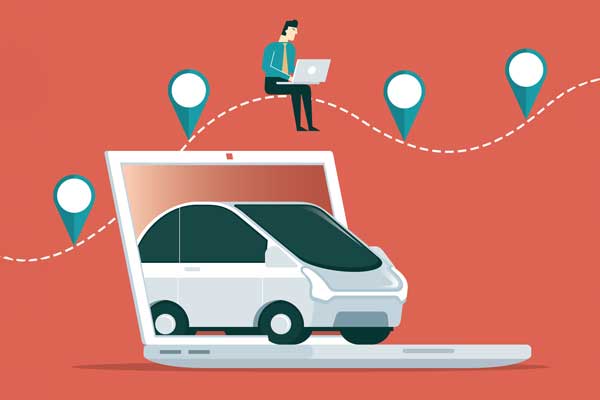The Cookies Are Crumbling: Preparing for the Future

Article Highlights:
- Dealers need to know how to leverage their consent-based first party data.
- Stay up-to-date on the latest developments in the advertising industry.
The “cookieless future” may sound like a familiar term to some. After all, Google announced back in January of 2020 that they planned on phasing out third-party cookies in their Chrome browser. At the time, advertisers feared the unknowns that this would bring to the digital landscape of marketing, but a lot has happened since that original announcement.
In order to secure support from businesses and government regulators, Google pushed back the date of when these changes would go into effect. Flash forward a couple years and Google has announced that by the end of 2023, third-party cookies will no longer be supported on the Google Chrome browser. (That’s this year folks!) In addition to Google’s announcement, Apple has declared some changes that make Identifiers for Advertisers (IDFAs) significantly less valuable than before. The combination of these things have made marketers from all industries increasingly concerned about the cookieless future.
But what exactly can you expect from these changes, and how can you properly optimize your dealership in the midst of it all?
Phasing Out Cookies: What Does It Mean?
It’s important to know that not all cookies are disappearing. First-party cookies are here to stay (yay). In case you aren’t familiar with these—first-party cookies are created by the website that a user is visiting, and they are used to remember things like user preferences, login information, and other settings. These cookies are stored on the user’s device and can only be assessed by the website that created them.
First-party cookies are safe from the phase-out, not to mention they’re the most reliable source of data you can use for targeted messages, relevant content, and tracking website user activity for your dealership.
Third-party cookies, on the other hand, are created by a domain other than the one that the user is visiting. They are used for tracking users across multiple websites and delivering targeted ads. Third-party cookies are stored on the user’s device and can be accessed by any website that uses them. For example, when you search for a new umbrella online and then see umbrella ads plastered across the next 10 sites that you use—that’s a third-party cookie in play.
Ultimately, first-party cookies are used to improve user experience, while third-party cookies are used for tracking and advertising purposes.
Phasing out third-party cookies means that websites will no longer be able to use third-party cookies to track users’ online behavior and deliver targeted ads. Instead, advertisers will need to use alternative methods to target users. This being said, utilizing non-cookie identifiers like email addresses will be key to targeting consumers post cookie-pocalypse.
Many businesses are shifting their marketing strategy toward collecting vast quantities of accurate, actionable customer data. This is good news for a lot of dealers, since they’re able to utilize first-party data in their DMS to not only drive better marketing results, but build customer loyalty, boost profitability, and capture in-market demand as well.
Cookie-less Optimization
As we approach the day when third-party cookies are no more, it becomes evident that dealers and other businesses need to know how to leverage their consent-based first party data to focus their ad spend on trusted sites and apps. After all, no one wants to be caught relying on these cookies to ensure they’re reaching interested consumers. Business and dealerships alike should prepare for the loss of third-party cookies by:
- Building a first-party data strategy- Collecting and leveraging first-party data can help your dealership understand your customers better, delivering more personalized experiences.
- Exploring alternative targeting methods- Start exploring methods like contextual advertising, or cohort-based targeting.
- Contextual advertising is a type of online advertising that shows ads based on the content of the webpage being viewed.
- Cohort-based advertising is a type of advertising that targets groups of consumers who share similar characteristics or behaviors.
- Focus on privacy- Your dealership should prioritize privacy and data protection by being transparent about data collection and use.
- Stay informed- Stay up-to-date on the latest developments in the advertising industry and prepared to adapt to changes as they happen.
Quick Tip: Be creative. Making sure that your dealership’s ads are unique, eye-catching, and engaging can do a lot in terms of improving your click-through rates and conversions.
Bonus Tip: Test, test, test. And don’t give up. Try out different targeting strategies to see what works best for your dealership and its audience. You can then build on these strategies to continually improve your advertising performance using first-party data and other alternatives to third-party cookies.
Emerging from the Crumbles
Although the future of advertising may initially seem grim without the fancy features and benefits of third-party cookies, there really is a lot to look forward to amongst the chaos. Third-party cookies have misled a lot of businesses and advertisers to believe that more targeting means more relevant ads and better business outcomes (ahem, we want quality– not quantity people). Third-party strategies like this are not always effective, especially for dealerships that could be utilizing first-party data.
Without third-party cookies, many costs associated with advertising go down and their effective business outcomes go back up. More specifically, when advertisers focus on direct marketing that connects 1:1 with an individual, they will get better outcomes than ads shown on millions of sites to people and bots alike. This will also reduce the need for privacy-invasive data collection and the extra costs of targeting parameters, audience segments, fraud detection, brand safety detection, etc. The “cookieless future” is indeed bright.
With this change rapidly approaching, it’s a good idea to learn about the data your digital advertising providers use in your current strategy. First-party data is always more reliable and influential than third-party data, so becoming familiar with using those targeting methods will only prepare you better for the future. As Google works more vigorously toward its third-party cookie-free operations, we will continue to offer updates and assistance to dealerships.
Related Articles:

Harvesting Profits: Autumn Opportunities in Your Service Drive
As leaves begin to fall and jack-o’-lanterns light up porches, your service drive faces its own set of tricks and treats.

Maximizing Targeted SEO: Putting Consumer Needs in the Driver’s Seat
This article was written by Kenna Smith, a marketing communications intern. Today, SEO is more than a buzzword; it’s a game-changer. Businesses have been working…

Texting Tips: 5 Steps to Better Messaging
Fine tune your texting skills to send an impactful message every time.

Maximizing Your Marketing Potential with QR Codes
Nearly 89 million US smartphone users scanned a QR code with their mobile devices in 2022 – a number predicted to reach more than 100…















